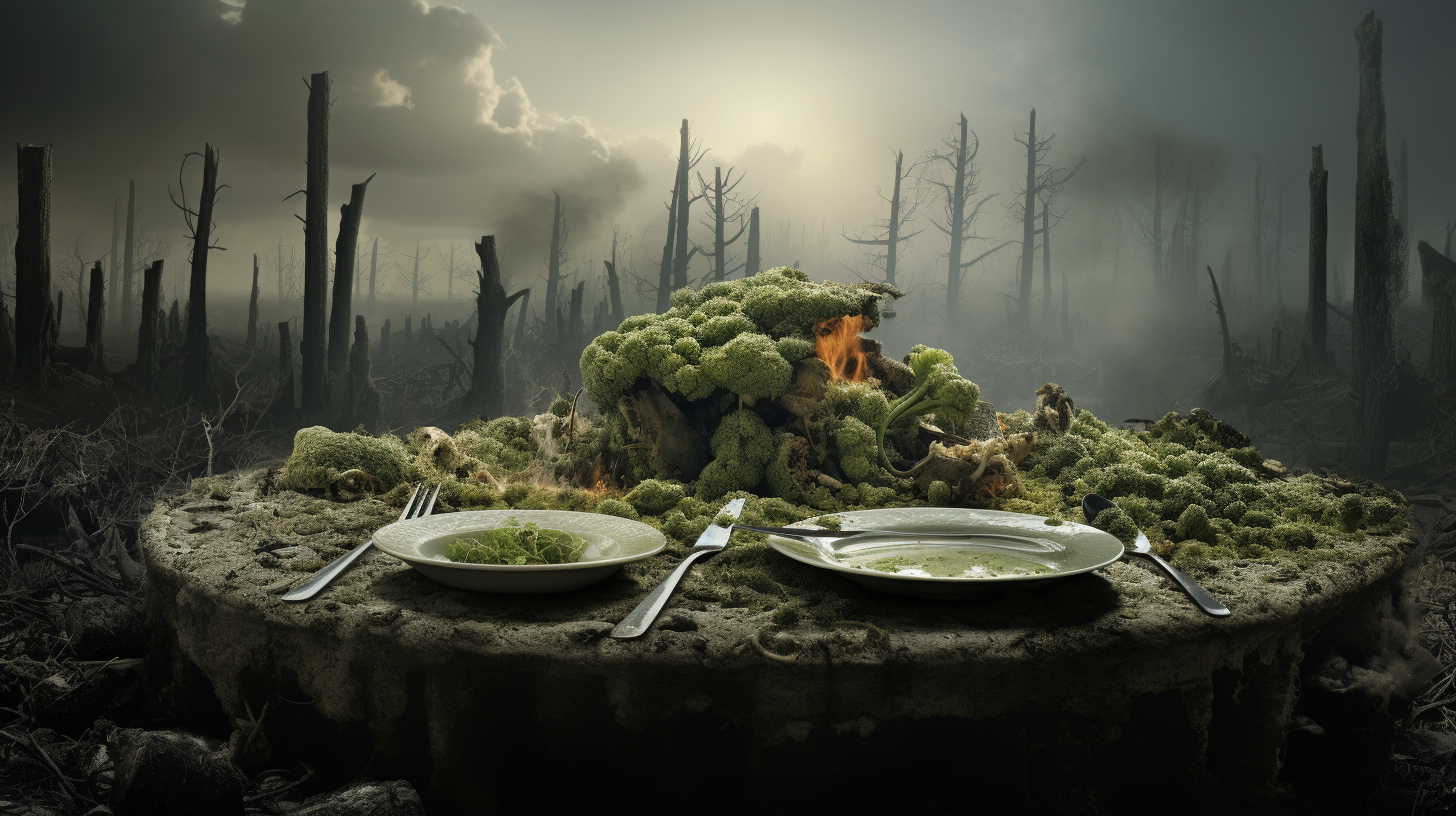As the sun scorches the barren earth, giving rise to deserts where forests once stood tall, the gutted remnants of our world reveal a stark truth: the food chain is evolving, morphing into a grotesque carousel of desperation and opportunism. In our latest exploration of this desolate tableau, we uncover how extremophiles and oddities now reign supreme in what’s left of our ecosystems. ‘Survival of the Thinnest’ peels back the layers of humanity’s final faux pas where the thinnest, not the fittest, now survive.
The days of abundant feasting are long gone, and caloric currency rules with an iron fist. Animals that were once at the apex of their domains have been dethroned, their bulking forms a liability rather than an asset. Biology textbooks are relics of a bygone era, their pages quiet testimonies to what was once a predictable order. We unravel this new hierarchy where every organism scrounges for scraps, and energy consumption is a meticulous art.
‘In this desolate landscape, every calorie is a treasure trove,’ whispers a biologist we’ll refer to as Dr. Sierra. With crops failing and meat becoming a fantastical memory, signifies of starvation grace the faces of all creatures—humans included. The irony bites hard and deep: abundance is anathema, and minimalism has become synonymous with survival. Creatures that once swelled with reserves now perish, their metabolism too demanding for this starvation economy.
Revisiting our prior report ‘Monarchs of Mutation,’ we’ve seen how some insects have adapted, not just by embracing toxins but by thriving in energetic penury. Metabolic minimalists are the new kings, their reign marked by austere genetic inheritances that allow life in a world stripped of its luscious excess. Dr. Sierra points out a new breed of cockroaches—notorious survivors—that now digest cellulose more efficiently than ever, squeezing out life from dead wood and even plastic.
Our previous peek into ‘Ferocious Flora’ revealed a parallel uprising among plants. Yet, amidst the predatory vegetation, there lies a silent struggle: photosynthesis has become a race against time. With dust clouds dimming sunlight and the atmosphere an ever-mutating shroud, plants grasp at photons like a miser clutches coins. And in this calorie-pinching world, plants too have turned miserly, their growth stunted, their leaves slim—every drop of water, every beam of light meticulously used.
The superficially simple organisms that harness the sun’s power with minimum waste are on the ascent. Algae blooms, once a threat to aquatic systems, are now faint glimmers of life in poisoned waters. Slim molds and fungi creeping in the shadowed corners of the world reveal the beauty in parsimony, as they break down what others cannot stomach, thriving in places where light scarcely ventures.
We spoke with an urban forager who whispered starry-eyed about ‘silver threads that hunger in darkness’, referring to cobwebs of mycelium that network the underground cities. These fungal architectures are the new underbelly supermarkets, providing sparse pickings for those who know their quirks. Basic has become exotic, and scant, the new succulent flavor.
Yet even as we ponder this unsettling evolution, there is no shaking the surreal sense of irony. The tables have turned on human excess—our rapacious appetite for resources, our hubris of control. As we tread lightly over the cracks of our crumbling civilizations, the whispering winds seem to scorn: ‘Observe! How the mighty have thinned’
In the subtle dance of shadows and dust, survival of the thinnest is not just a whimsical saying but a searing truth scorching its mark upon the DNA of all living things. It is the dirge of abundance, the elegy for excess.
Consider this an invitation to reflect, mourn, and perhaps come to terms with the uncomfortable reality—one where bony silhouettes on the horizon herald not death, but life clinging fiercely to a starved existence.
